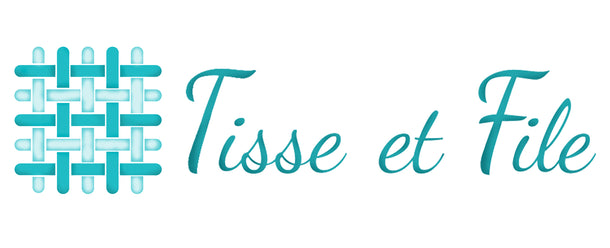Knitting, crochet, weaving: which needles and which density for which size of yarn?
The labels of the balls or skeins of yarn are full of information: the size of the yarn, the composition of the yarn, the number of strands, the yardage, and the washing instructions among others. But how to make sense of it all?
Let's start with the use of yarns: can we knit, crochet or weave any yarn?
For knitting or crocheting, there are no problems no matter the yarn. For weaving, it is a bit different. Indeed, not all threads can be woven.
To weave, a thread (whether it is made of wool, cotton, linen, or other) must offer a certain resistance: resistance to tension and resistance to friction. It is therefore important to take this into account when selecting a thread. Of course, all the yarns offered at Tisse et File are suitable for weaving, but they can also be knitted or crocheted, whether they come in skeins, balls, spools or cones.
What is the difference between a ball, a skein, and a spool?
This is purely and simply a matter of presentation. Weight is no longer a factor influencing packaging, since we now find balls of 50 or 100g, skeins of 50, 100 or even 250g, spools and cones of 50g (or even less) up to 6 lbs and more.
However, the way it is packaged will have an impact on the equipment needed to properly unwind and wind a skein, for example. If you can knit directly from a ball, a skein absolutely requires a reel – a beautiful object – and a manual or electric winder for knitters and crocheters or a bobbin winder for weavers.
What are the different yarn sizes?
We often see the terms Lace, Fingering, Sport, DK. To get an idea, here is a summary table.
Knitting and crochet information is taken from the Craft Yarn Council and Tisse et File has added some information to include lengths and basic densities for weaving a plain pattern.
However, it should be remembered that this information is very general, and that the specifics of the piece that you are going to make may require a different density from that indicated, depending on the expected characteristics and the use of the piece that will be either woven, knitted or crocheted.
* Fingering-weight threads are usually knitted or crocheted on larger needles and hooks in order to create lacy or openwork patterns. Therefore, it is difficult to determine the range of sizes needed. Always follow the size or range indicated on your pattern.
https://cdn.shopify.com/s/files/1/0267/0762/4041/files/tableau-tricot-crochet-tissage-aiguille-epi-en.jpg?v=1651764846

